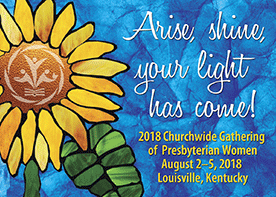PW Gathering book groups
By Louise Van Poll
Looking for a good read? Looking for something engaging or inspiring or thought-provoking for your next book study? Well, hundreds of attendees of the 2015 PW Gathering participated in at least one of three book groups during the Gathering.
The three books discussed were The Submission by Amy Waldman; Paula by Isabel Allende and Learning to Walk in the Dark by Barbara Brown Taylor.
The Submission is set two years after 9/11 and is a fictional accounting of the selection committee choosing the 9/11 memorial. Turmoil arises when the winning design has been submitted by an American non-religious Muslim architect.
There is a plethora of characters in this book, covering survivor-families, the families of slain firefighters and other first-responders, political aspirants, reporters looking for the next big story and even the families of illegal immigrants killed while cleaning offices. This book will cause you to remember the discrimination and profiling following 9/11 and ask you to reflect on how far we’ve come. You will experience through these pages how one act can change thousands of lives for decades.
Paula is a biography and memoir of Isabel Allende’s life. It is based on her experiences and is written as a letter to her comatose daughter. There are several light-hearted moments that will leave you laughing out loud. However, it is a very graphic novel that delves into life and death and her three marriages in explicit detail. She writes about Chilean life before, during and after the Chilean revolution and having to live in exile for several years. At the same time, she is documenting her daughter’s care, first in the hospital and later in her home. It is a story, not only of a mother’s love, but of the interconnectedness of the extended family, friends and caregivers.
Learning to Walk in the Dark would be an excellent choice for any book study. The author xplores what darkness means to us and to our religion. She asks the question, “Why do we think dark is bad?”
When God created light, the darkness was already there. God did not abolish dark, but created light to complement it. Dark and light are just two sides to a coin. Neither side is right or wrong (unless it’s a coin toss). She asks us to consider how our dark-skinned brothers and sisters feel when our speech and our worship continually equates light with goodness and darkness with evil. She explores darkness in this book by following the phases of the moon: full, waning, new and waxing. She explains how the electric lightbulb has changed our working and sleeping routines, our sleep patterns, and the ecology. She also reminds us that a lot of the best events in the Bible happen in the dark. The dark stable where Jesus was born; the resurrection that happened in a dark, sealed tomb; even when Abraham was visited by the angel, who told him to look at the (night) sky, because his descendants would outnumber the stars.
By searching for God in the dark, where God actually lives, we can not only become enlightened, but endarkened. This book will inspire discussions on several levels and may even inspire readers to spend a night outdoors.

